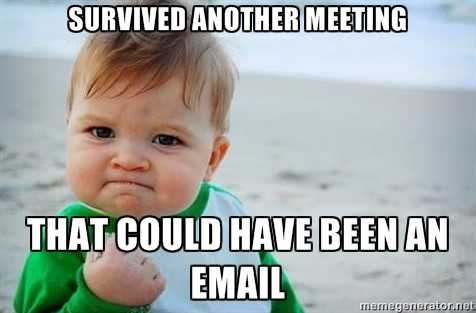Part 5: Foolproof Communication for Distributed Teams
The single biggest problem in communication is the illusion that it has taken place, Shaw once said. Want to know if you are under a delusion? Read our advice on building effective communication in distributed teams.
- Provide ample informal time (water cooler chat!) for creative communication, and document and sync any solutions
- Start with established communication flows, and communicate abundantly
- Cut back on inefficient communication processes such as excessive emailing and videoconferencing
Make room for water cooler conversations
Adopting communication software is not enough to bring all teams on the same page.
In fact, in traditional offices, many creative solutions and decisions are made away from the phone and computer at water cooler chats and during other informal conversations. Many successful businesses started with friends shooting the breeze. This is where project leaders need to pay attention the most. Leaders need to find a way to compensate for the lack of informal conversations between members of distributed teams. If you are a leader, make travel part of your routine and work on building rapport during those visits. Also make sure team members spend at least 3-5 days together. In our case, this simple move reduced the need for written communication by about 30%. When team members know each other personally and understand how their counterparts think they make fewer wrong assumptions and are better able to skip irrelevant details. As a result, when the teams go back to working remotely, they can to focus on discussing bold ideas without being bogged down with dotting every i and crossing every t.
Of course, it is not always possible or affordable to gather for retreats and holidays.
Fortunately, there are small things that matter, too. Don’t miss an opportunity to:
- help new members to fit in
- incorporate informal conversation time into meetings
- offer out-loud kudos and support
- create “fun zones” like group chats on social media
- experiment with communication!
How to establish effective communication
Communicate in abundance. Discuss topics the remote team may not know about, and provide lots of details. Don’t worry if some team members may have already heard these details -- even seemingly irrelevant information helps everyone on the team understand the story behind the project and make better decisions in their sphere of influence.
Establish communication flows. How does a question get posted and answered? How is a bug report submitted and handled? When is “done,” done? This is about managing expectations: team members must know what to do if they have a question, and know when and from whom to expect answers.
Use Golden (overlapping) Hours wisely. The trick here is to consolidate everything from yesterday and upcoming today into a list to resolve within a short amount of time, say, 1 or 1.5 hours.
Pro tip: Don’t send an email with each question you have. Send one at the end of the day containing all accumulated agenda items. Answer these three basic questions:
- What happened yesterday that needs the attention of a remote team?
- What is anticipated today, and how do we mitigate it?
- What issues are we running into?
Steer clear of these practices
Abandon inefficient video conferencing. Set up conference calls only when needed. Always ask: can this meeting be an email? A lot of time is lost not only in the meetings but around them, since you cannot schedule anything right before the meeting or after in case it runs long.
Reminder: Video calls never substitute for working in an office together. They are great for resolving ongoing issues, but must have a predetermined agenda and an expected set of outcomes. If you need creative thinking, meet in the environment most approximated to personal meetings.

Example: Martin set up a 15-minute call to discuss the workflow with the dev crew. Since he didn’t offer any agenda, the conversation quickly descended into irrelevant topics and speculation. This lasted for 40 minutes. No goals were achieved, and each person signed off feeling frustrated and unmotivated. Please have an agenda.
Be wary of relying on tools. No matter how modern and tricked-out it is, no tool is going to solve your communications issues on its own. A number of platforms claim to bundle all the communication in one browser window and that’s great as far as it goes, but don’t be fooled. Effective communication is a combination of interpersonal skills, great process, managed expectations, some software and, most importantly, the willingness to understand and accommodate the communication gap introduced by remote setup.
Setting up effective communication is easy if you follow the advice from this post. No more illusions – you will see the results for real. The success will come even faster if there is a fluid workflow with continuous feedback loops, which we will cover next in Lesson 6.
Email us
Check our latest case studies
See all